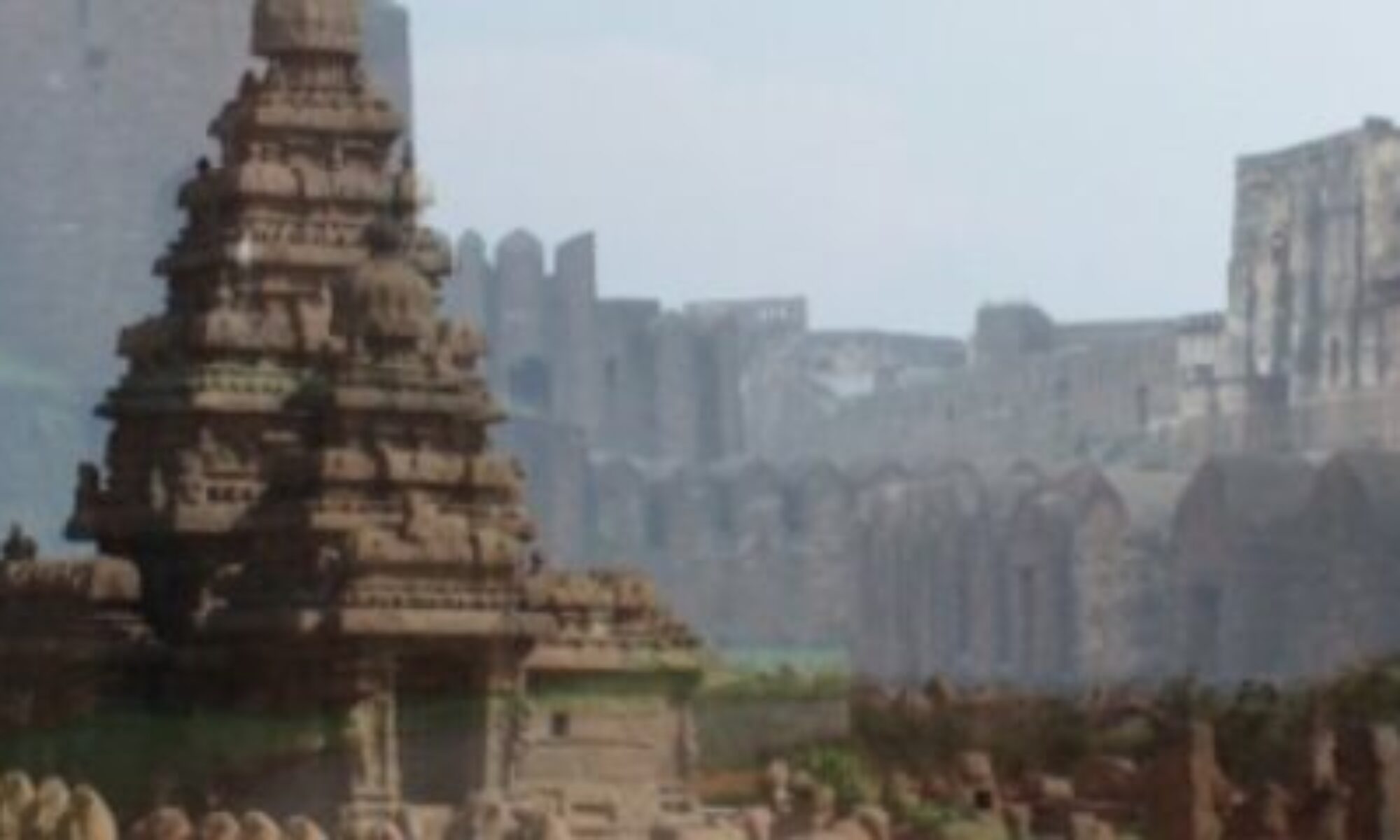This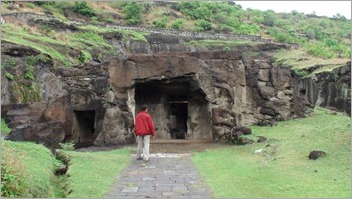 last Saiva cave is at a considerable distance from all the other caves. There are around 20 steps up the face of the hill where this cave was excavated. There is another cave nearby but that is still not excavated.
last Saiva cave is at a considerable distance from all the other caves. There are around 20 steps up the face of the hill where this cave was excavated. There is another cave nearby but that is still not excavated.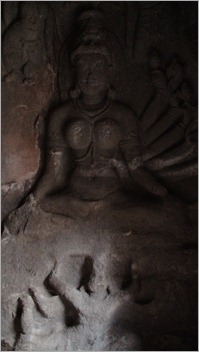
This cave is similar to Kailas Temple (Cave 16) in many aspects, hence the name. First similarity is the façade which is almost the same. The entrance is narrow under which there are pillars on either side. However, these have never been properly carved. There is an idol of Chakreswar with 10 hands and a nice head-dress. Half of the body has been destroyed and we can find female attendants and 5 of the 10 hands today. 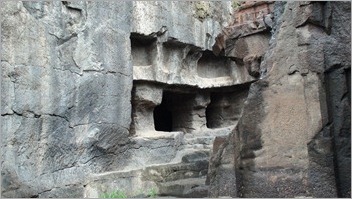 Garuda is shown as the vehicle. Interestingly, we find a Jain idol, probably a Tirthankara on top of this larger one. It may be assumed that his cave, even if incomplete belongs to be later part of the excavations and is contemporary to the Jain caves here.
Garuda is shown as the vehicle. Interestingly, we find a Jain idol, probably a Tirthankara on top of this larger one. It may be assumed that his cave, even if incomplete belongs to be later part of the excavations and is contemporary to the Jain caves here.
This narrow opening leads to a portico in front of the temple. We see that the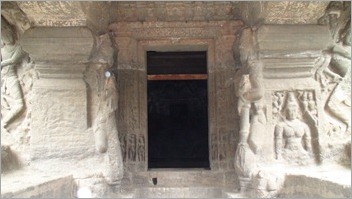 re is a corridor around the temple just like the Kailas, but here is unfinished and very crude. The temple structure is more inspired from the Dravidian architecture which shows in its external sculptures. There are the usual dwarapalas in dancing postures on either side of the door. The temple is situated in an excavated pit 130 feet long and 80 feet wide, with two side excavations.
re is a corridor around the temple just like the Kailas, but here is unfinished and very crude. The temple structure is more inspired from the Dravidian architecture which shows in its external sculptures. There are the usual dwarapalas in dancing postures on either side of the door. The temple is situated in an excavated pit 130 feet long and 80 feet wide, with two side excavations.
The temple has a mukhamantapa and a small shrine. 16 p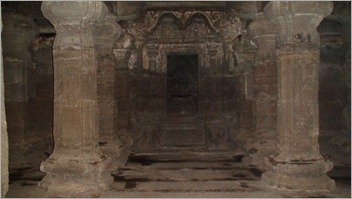 lain pillars support the roof just like Kailas.. The pillars were painted and we can see the traces even today. The primary difference between this and the Kailas is that Kailas has a proper adhishthan (base) which is the chariot. This is one at the ground level.
lain pillars support the roof just like Kailas.. The pillars were painted and we can see the traces even today. The primary difference between this and the Kailas is that Kailas has a proper adhishthan (base) which is the chariot. This is one at the ground level.
The sanctum is empty but for a pedestal on which there was a linga. There are no sculptures on the inside and even the outside is not carved. According to me, this is a feeble imitation to the great Kailas.
We have completed the Brahmanical section of the Ellora Caves. The next four are of the Jain culture, and carved in more detail, being the latest of all.
